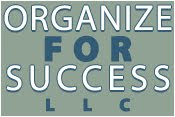- Has your business incorporated technological innovations to protect what information is stored in your system and shared between your team members?
- Have you reviewed the privacy settings on each of your social media platforms, verifying that you are sharing with others only the information you'd like displayed to them?
- Have you set each of your online accounts to require two-factor authentication so any account accessed by a device the platform doesn't recognize will be asked for a verification code?
- Do you use a unique and complex password for each account? How often do you reset each?
- Have you created a habit for logging out immediately upon finishing use of any account?
- Have you strengthened your passwords to include both uppercase and lowercase letters, numbers and symbols, creating a habit to change or update them regularly?
- Has your business enacted transparency on usage so your constituents are very clear about the manner in which you will be utilizing whatever information they share with you? People want to know with whom their data is being shared, what type of data is being collected from them and how the data is being used; are you proactively answering those questions?
- Do you get consent from folks in a photo prior to sharing it?
- As cookies are used to remember and track your online data, habits and preferences, does your business have a policy for their utilization, particularly how often they are to be deleted?
- Do you stop and think before utilizing public WiFi, remembering that it is not a secure connection and avoiding transactions that should be kept private?
- Have you set-up your mobile devices so you can easily shut each down remotely if stolen or lost? Do you have antivirus software installed on each of your mobile devices? Further, when replacing a mobile device, do you know how to dump data off the old one?
Above all else, though, it is imperative to be aware of what data you're posting online. As explained in the cyber privacy parable at http://www.youtube.com/watch?v=H0I7jQb37bo, there are many folks able to access what you post online, way beyond those friends or connections with whom you consciously know you are sharing. Advertisers, news outlets, governments and criminals alike are interested in what you are posting, but you have control over what information you put out there.
Further, as outlined at http://bit.ly/1wBMFL6, there are activities for which people are willing to trade privacy to get ease of use. Be aware of this feedback so you can adapt your processes accordingly, but never take advantage of how your consumers feel, trading privacy for ease of use only when it is absolutely necessary. If you want customers to trust you, it is important for you to respect their personal data. In what instances can you offer both privacy and ease of use?
What is your business' data policy? What steps are you taking to protect your own data? How do you address your clients', vendors' and employees' need for keeping data safe, secure and private?






